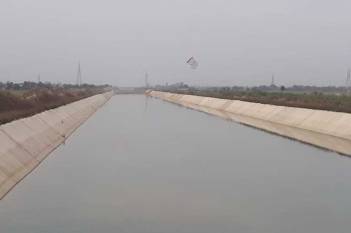LUCKNOW, 31 July 2024: Uttar Pradesh, a crucial contributor to India's agricultural output, faces challenges in ensuring consistent irrigation due to factors like variable rainfall and a growing population. To address these concerns, the state government implements various irrigation schemes.
This report explores the current landscape of irrigation schemes in Uttar Pradesh.
Types of Irrigation Schemes in Uttar Pradesh
Uttar Pradesh utilizes a multi-pronged approach to irrigation, encompassing:
Canal Irrigation: This traditional method involves a network of canals drawing water from rivers like Ganga, Yamuna, and Saryu. However, the canal network may require upgrades to improve efficiency and address water loss issues.
Groundwater Irrigation: Tubewells and borewells tap into groundwater resources, providing irrigation access in remote areas. However, overdependence on groundwater can lead to aquifer depletion, necessitating sustainable management practices.
Micro-Irrigation: Techniques like drip irrigation and sprinkler systems are gaining traction due to their water-saving capabilities. The government promotes micro-irrigation through subsidies and awareness campaigns.
Government Initiatives
The Uttar Pradesh government actively promotes irrigation development through various initiatives:
Construction of New Canals: Projects like the Saryu Canal Project and Ken-Betwa River Linking Project aim to expand the canal network and increase irrigated area.
Chief Minister's Micro Irrigation Scheme: This scheme provides subsidies to farmers for installing micro-irrigation systems, encouraging water conservation practices.
Repair and Modernization of Existing Infrastructure: Upgrading canals and distribution channels is crucial for minimizing water loss and improving irrigation efficiency.
Challenges and Considerations
Despite ongoing efforts, some challenges persist:
Unequal Distribution of Irrigation Resources: Ensuring equitable access to irrigation facilities for all farmers, particularly small and marginal landholders, remains a focus area.
Sustainability Concerns: Balancing water demands for irrigation with long-term water security requires promoting sustainable water management practices.
Funding and Implementation: Efficient allocation and utilization of funds for irrigation projects are crucial for successful implementation.
Looking Ahead
Uttar Pradesh's irrigation landscape is evolving. By focusing on:
Expanding the micro-irrigation network
Modernizing canal infrastructure
Promoting water conservation practices
Improving water use efficiency
The state can ensure more sustainable and equitable access to irrigation for its farmers, ultimately contributing to a more resilient and productive agricultural sector.
Weather Forecasting Data: Real-time weather data and seasonal forecasts help farmers plan planting schedules, irrigation requirements, and potential pest control measures.
Climate-Smart Agriculture Apps: Mobile applications provide farmers with localized weather updates, crop recommendations based on their specific climate, and best practices for sustainable agriculture.
Remote Sensing Technology: Satellite imagery and drone technology are used to monitor crop health and assess soil moisture content, enabling farmers to optimize resource use.
The Future of Weather-Centric Agriculture in India
As India strives for a more sustainable and resilient agricultural future, embracing weather-centric crop selection will remain crucial. By employing a combination of traditional knowledge, technological advancements, and innovative farming practices, Indian farmers can adapt to changing weather patterns and ensure long-term agricultural success.
A Symphony of Climate and Cultivation
India's weather-centric approach to agriculture exemplifies the remarkable adaptability of its farming communities. By strategically selecting crops based on weather conditions and leveraging technology, farmers ensure food security and contribute to a vibrant agricultural landscape. As India embraces sustainable practices and fosters climate-smart agriculture, the future of weather-centric crops remains bright, promising continued growth and prosperity for the nation's agricultural sector.
Note: This report is based on publicly available information and may not be exhaustive. It is recommended to consult the official websites of the Uttar Pradesh Irrigation Department and other relevant government agencies for the latest updates and detailed information on specific irrigation schemes.
Image credit: sriavantika.com























